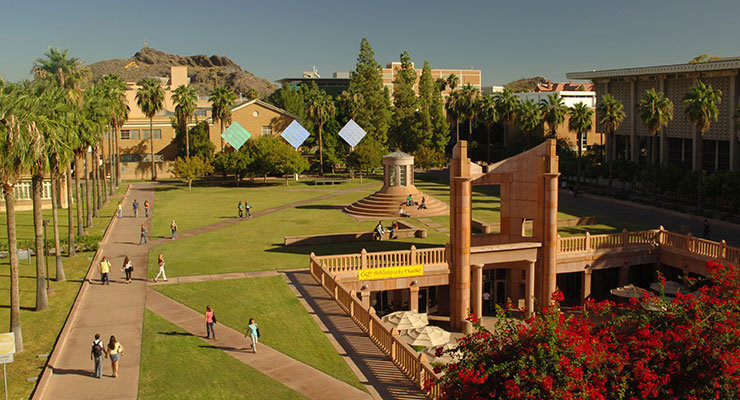Five ways to utilize ASU Libraries in online courses
Check out these helpful tips on how you can leverage the powerful resources from the ASU Libraries in your courses.
1. Provide a Back-Up Plan For Books That Ship Late
Have you come across the student who ordered a textbook, and through no fault of his own did not receive it in time to complete the first assigned reading? This is an unfortunate way for students to begin a course, and it can usually be avoided. Utilize the library’s reserve services to make the first chapter of a book available electronically. Generally, the library can digitize one chapter or 10% of a book for your course. To learn more about which materials are eligible and to find the online request form, see Reserve Service Guidelines.
2. Introduce Students to Resources to Help Them Succeed
ASU provides services that help students succeed, and the library is just one of them. With thousands of electronic resources available to students from any location, the library is a rich source of information for online students. Research guides on various topics, such as History and Nutrition are available. There are also research guides for specific courses, such as ENG 102/105/108 First-Year Composition. You can explore different guides by topic here. Did you know there is also a library page devoted to ASU Online students?
The 2015 Horizon report identifies “improving digital literacy” as a significant but solvable challenge. “With the proliferation of the Internet, mobile devices, and other technologies that are now pervasive in education, the traditional view of literacy as the ability to read and write has expanded to encompass understanding digital tools and information.”[1] Even in courses without research requirements or another obvious need for library services, introducing students to these resources is a nice way to support their overall academic endeavors. Work with your Instructional Designer to add the library link to a course menu, or consider mentioning it in your course introduction.
3. Embed Videos
Videos are a nice addition to other course materials in an online environment. ASU Libraries provide access to streaming videos through Academic Video Online Premium (aka Alexander Street Press) and Films on Demand. If your favorite YouTube or Vimeo content is no longer available, remember the library provides access to thousands of educational videos students can view online. For help adding videos to Blackboard, contact your Instructional Designer, or see Linking Videos in Course Management Shells.
4. Provide Instructional Materials on Citation Styles
Students are often required to use a citation style, such as APA or MLA, when writing course papers. Many first-year students are using a citation style for their first time, and the extra amount of time formatting takes can initially come as a big surprise. There is a growing consensus that online students need more self-discipline to succeed than those in on-ground courses.[2] Help students early on with a tip: if this is their first time using a style guide, they should allow themselves time to learn about the citation style before writing the paper. Supply links to the library’s resources, such as the Citation Styles guide, which includes examples of various citation styles, plus links to additional help resources. If you prefer that students consult use a full, official style guide but are conscious of textbook expenses, the Chicago Manual of Style eBook is available fully online through ASU Libraries!
5. Fully Utilize ASU’s Resources to Promote Critical Thinking Skills
Findings of a recent study in which students and faculty ranked student preparedness on 58 e-learning competencies suggest that “while students may be reasonably prepared to deal with the technology of e-learning, for activities such as reading and writing, being clear and concise in responses, synthesizing ideas, planning strategies, making arguments, and working with others, students are not well prepared.”[3] Librarians are knowledgeable about resources and teaching strategies that promote critical thinking skills, and they have ideas to share that are especially helpful for courses with a research component. They can direct you to tutorials to add to your course, or they may suggest collaborating to create new ones. Identify your subject librarian!
References
- Johnson L, Adams Becker S, Estrada V, Freeman A. NMC horizon report: 2015 higher education edition. Austin, Texas: The New Media Consortium. http://www.nmc.org/publication/nmc-horizon-report-2015-higher-education-edition/. 2015. Accessed April 24, 2015.
- Allen IE, Seaman J. Grade Change: Tracking online education in the United States. Babson Survey Research Group and Quahog Research Group, LLC. http://www.onlinelearningsurvey.com/reports/gradechange.pdf. 2014. Accessed April 23, 2015.
- Parkes M, Stein S, Reading C. Student preparedness for university e-learning environments. Internet and Higher Education. 2015, 25, 1–10.



